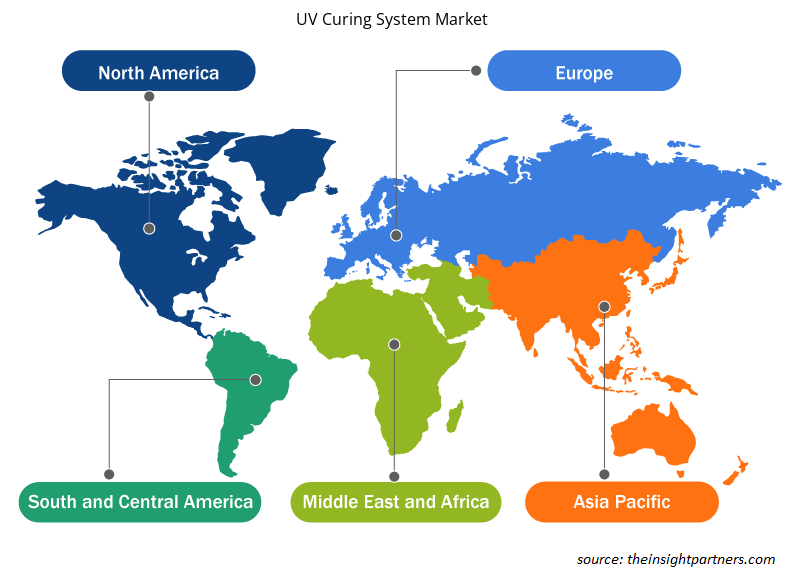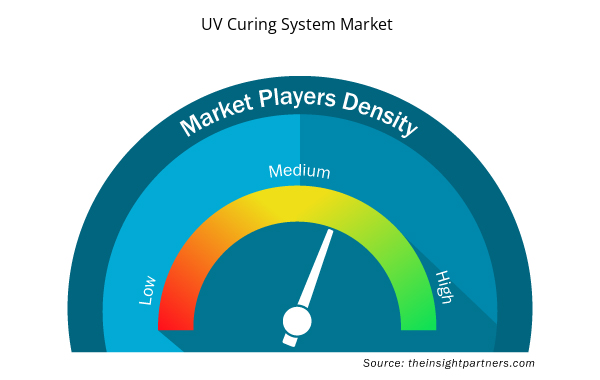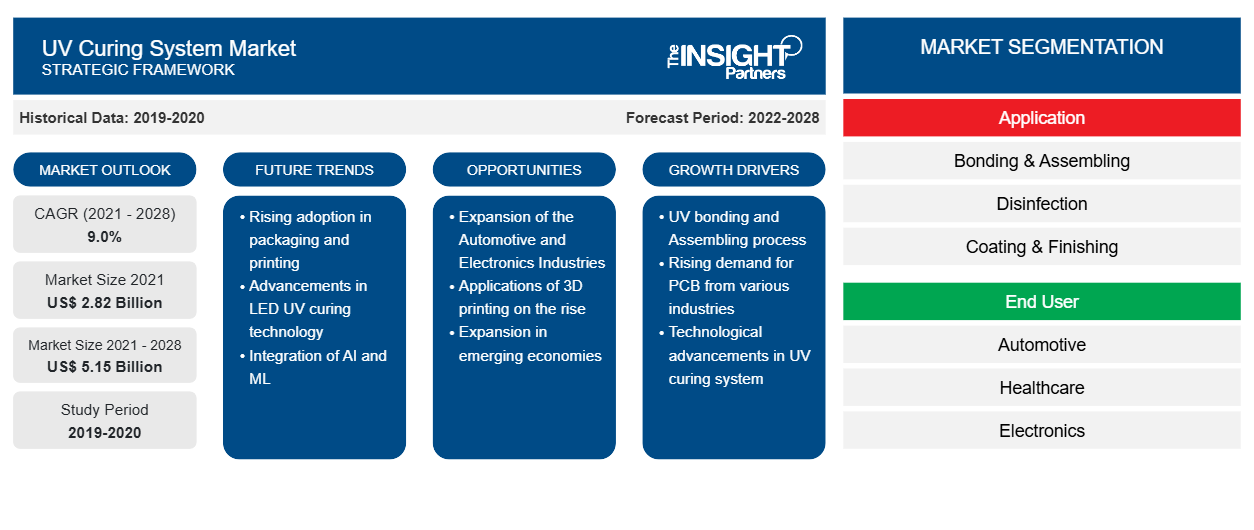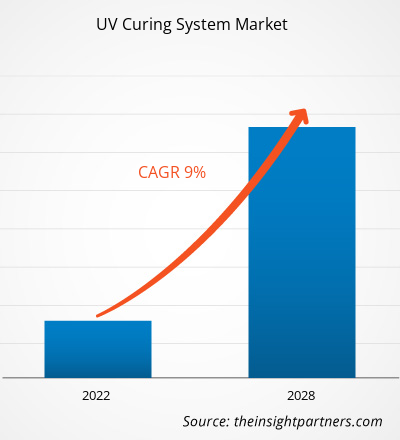2021 年紫外线固化系统市场价值为 28.172 亿美元,预计到 2028 年将达到 51.532 亿美元,2021 年至 2028 年预测期内的复合年增长率为 9.0%。
紫外线固化是一种干燥油墨、粘合剂和涂料的方法。紫外线固化系统是一种相对较旧的技术,已使用很长时间。旧的紫外线固化系统使用汞灯进行固化。然而,随着技术的进步和汞灯对工人和环境的影响越来越大,紫外线 LED被用作固化系统的光源。固化方法广泛应用于许多垂直行业,如汽车、医疗保健、电子、航空航天、图形和艺术以及木材涂料。随着上述行业对粘合和组装、印刷、涂层和其他工艺的需求不断增长,对系统的需求将继续上升,这反过来将促进紫外线固化系统市场的增长。
全球紫外线固化系统市场生态系统的主要利益相关者包括组件制造商、紫外线固化系统制造商、政府机构和监管机构以及最终用户。组件和硬件供应商为紫外线固化系统制造商提供大量零部件。对这些组件制造商的任何影响都会直接影响紫外线固化系统生产商,因为整个生产过程都依赖于组件的及时供应。紫外线固化系统的广泛供应链在促进紫外线固化系统的增长方面发挥着巨大作用,从而影响紫外线固化系统市场的增长。
定制此报告以满足您的需求
您可以免费定制任何报告,包括本报告的部分内容、国家级分析、Excel 数据包,以及为初创企业和大学提供优惠和折扣
- 获取此报告的关键市场趋势。这个免费样品将包括数据分析,从市场趋势到估计和预测。
COVID-19 疫情对亚太地区紫外线固化系统市场的影响研究
在疫情爆发初期(2020 年第一季度),该地区多个政府为控制 COVID-19 的蔓延而实施的限制措施,导致汽车、电子等行业的劳动力有限,严重影响了生产过程。消费电子和汽车是该地区紫外线固化系统市场增长的重要行业。由于失业或减薪,客户的购买力大幅下降。购买力下降影响了该地区消费电子产品的销售。根据汽车行业协会的数据,2020 年印度汽车行业每天损失约 311.64 亿美元。同样,根据世界经济论坛的数据,2020 年 2 月上半月中国汽车销量下降了 92%。然而,随着经济重新开放和工业开始运营,各种终端用户对紫外线固化系统的需求开始逐渐增长。此外,随着早先限制的放松,公司现在可以以高劳动力能力开展工作。工业活动的低迷对紫外线固化系统市场产生了负面影响。inindustrial activities have negatively impacted the UV curing system market.
UV 粘合和组装推动 UV 固化系统市场的增长
UV 粘合和组装是一种用于玻璃、金属和塑料粘合以及印刷电路板 (PCB) 组装的工艺。此工艺中使用的粘合使用紫外线敏感粘合剂,这些粘合剂涂在产品上并暴露于紫外线固化灯的能量下进行固化。与其他工艺相比,紫外线固化使该工艺更快、更灵活、更持久、更环保。
UV LED 固化方法减少了挥发性化合物的排放。因此,各个垂直行业对使用 LED 的 UV 固化系统的需求增加,从而推动了市场的增长。然而,有限的深度固化可能会成为 UV 固化系统市场增长的制约因素。
电子和汽车等各行各业对 PCB 的需求不断增长,这影响了全球对 PCB 需求的增长。消费电子产品、可穿戴设备(如包含芯片和柔性传感器的智能手表)制造商因物联网 (IoT) 而看到了新的前景。设备设计和制造技术的突破对全球 PCB 生产产生了有利影响。因此,PCB 产量的增长推动了制造商对粘合和组装工艺的需求。此外,预计电子、家具和运输等终端使用行业对玻璃粘合的需求将增加,这将在预测期内推动 UV 粘合和组装应用领域的市场增长。
UV 固化系统市场的其他部分包括食品和饮料、制造、包装、木材等。UV 固化系统在这些应用中用于不同的目的,例如粘合和组装、消毒和印刷。与传统固化系统相比,UV 固化系统具有先进的功能,因此许多公司选择该系统作为更快干燥的固化方法。这些原因将支持当前和未来几年 UV 固化系统的增长。例如,食品和饮料行业越来越多地使用 UV 固化系统来消毒受污染的地下水和地表水。它们还被积极用于处理通过传送带的食品和包装材料,以确保产品在到达最终消费者之前的安全。这些因素推动了食品和饮料行业多年来对 UV 固化系统的需求。此外,由于 UV 固化系统具有快干特性,木材行业越来越多地采用 UV 固化系统进行粘合应用,这进一步推动了市场的增长。
基于最终用户的市场洞察
根据最终用户,紫外线固化系统市场细分为汽车、医疗保健、电子和其他领域。在汽车行业,紫外线固化主要用于加快油漆干燥速度。由于汽车公司的喷漆/干燥能力是大多数 OEM 生产线和车身修理厂的主要障碍之一,紫外线固化技术为公司提供了出色的省时程序。这种方法还用于汽车行业的其他各种应用,例如车身清漆或外部或内部组件上的防刮涂层、油箱或金属弹簧上的防腐涂层、塑料部件的去毛刺、玻璃板上的丝网印刷以及装饰板或后扰流板上的粘合剂。例如,贺利氏控股使用紫外线固化来提供各种汽车行业服务。它为前照灯镜头、照明反射器外壳、外部车身组件和引擎盖下组件提供紫外线固化成本。这增加了紫外线固化在汽车行业的使用。因此,汽车领域的紫外线固化系统市场预计将在未来几年增长。
UV LED 固化协会、美国涂料协会和国际 LED-UV 协会在 UV 固化系统市场生态系统中发挥着重要作用。COVID-19 疫情在很大程度上影响了 UV 固化系统市场的增长。由于工厂停工、边境暂时关闭以及全球贸易限制,疫情影响了企业收入和全球供应链。然而,随着情况逐渐恢复正常,预计该市场将表现良好。
紫外线固化系统市场区域洞察
Insight Partners 的分析师已详尽解释了预测期内影响紫外线固化系统市场的区域趋势和因素。本节还讨论了北美、欧洲、亚太地区、中东和非洲以及南美和中美洲的紫外线固化系统市场细分和地理位置。

- 获取紫外线固化系统市场的区域特定数据
紫外线固化系统市场报告范围
| 报告属性 | 细节 |
|---|---|
| 2021 年市场规模 | 28.2亿美元 |
| 2028 年市场规模 | 51.5亿美元 |
| 全球复合年增长率(2021 - 2028) | 9.0% |
| 史料 | 2019-2020 |
| 预测期 | 2022-2028 |
| 涵盖的领域 | 按应用
|
| 覆盖地区和国家 | 北美
|
| 市场领导者和主要公司简介 |
|
市场参与者密度:了解其对商业动态的影响
紫外线固化系统市场正在快速增长,这得益于终端用户需求的不断增长,而这些需求又源于消费者偏好的不断变化、技术进步以及对产品优势的认识不断提高等因素。随着需求的增加,企业正在扩大其产品范围,进行创新以满足消费者的需求,并利用新兴趋势,从而进一步推动市场增长。
市场参与者密度是指在特定市场或行业内运营的企业或公司的分布情况。它表明在给定市场空间中,相对于其规模或总市场价值,有多少竞争对手(市场参与者)存在。
在紫外线固化系统市场运营的主要公司有:
- 美国紫外线
- AMS 光谱紫外
- 戴玛斯
- Excelitas 技术公司
- 海诺威
免责声明:上面列出的公司没有按照任何特定顺序排列。

- 了解紫外线固化系统市场主要参与者概况
紫外线固化系统市场的参与者采用合并、收购和市场计划等策略来保持其在市场中的地位。以下列出了一些主要参与者的发展:
- AMS Spectral UV 总裁 Rich Bennett 于 3 月 16 日至 18 日在 Wynn Encore 宣布公司不仅作为创始人回归,还将成为 Print UV 2022 的白金赞助商。
- Phoseon Technology 宣布与 American Ultraviolet 合作,共同推动所有紫外线固化市场的 LED 固化技术发展。
全球紫外线固化系统市场根据应用和最终用户进行细分。根据应用,市场细分为粘合和组装、消毒、涂层和精加工以及印刷。根据最终用户,紫外线固化系统市场细分为汽车、医疗保健、电子和其他。
American Ultraviolet、AMS Spectral UV、Dymax Chemical (Shanghai) Co. Ltd、Excelitas Technologies Corp.、Hanovia-uv、Heraeus Holding GmbH、Jenton Group、Nordson Corporation 和 Phoseon Technology 是本次研究考虑的主要紫外线固化系统市场参与者。本研究报告还分析了多家参与者,以全面了解全球紫外线固化系统市场及其生态系统。
- 历史分析(2 年)、基准年、预测(7 年)及复合年增长率
- PEST 和 SWOT 分析
- 市场规模价值/数量 - 全球、区域、国家
- 行业和竞争格局
- Excel 数据集


- Hot Melt Adhesives Market
- Hydrogen Compressors Market
- Webbing Market
- Queue Management System Market
- Semiconductor Metrology and Inspection Market
- Piling Machines Market
- Advanced Planning and Scheduling Software Market
- Predictive Maintenance Market
- Europe Tortilla Market
- 3D Mapping and Modelling Market

Report Coverage
Revenue forecast, Company Analysis, Industry landscape, Growth factors, and Trends

Segment Covered
This text is related
to segments covered.

Regional Scope
North America, Europe, Asia Pacific, Middle East & Africa, South & Central America

Country Scope
This text is related
to country scope.
常见问题
There is an increase in the use of 3D printing in today's market. Many companies are increasingly using this technology for creating a three-dimensional structure for rapid prototyping and additive manufacturing. The UV curing process is based on photochemical reaction, using light instead of heat, which instantly dries and cures the inks. Therefore, with the high adoption of 3D printing in the global market, the market for UV curing is simultaneously growing, and it will continue to increase in the coming years.
The robust manufacturing industry across the APAC region is significantly driving the APAC UV curing system market. The countries across the region have a huge presence of electronics, automotive and medical equipment manufacturers. UV curing systems are actively utilized across these companies for various applications such as die attachment, wire tacking, pin attachment, and sealing & gasketing products. UV curing solutions are also adopted for coating applications across this industry.
UV Bonding and assembling is a process that is used for glass, metal, and plastic bonding purpose, as well as assembly of printed circuit boards (PCB). The bonding used in this process uses ultraviolet sensitive adhesives that are applied on the products and are exposed to energy from UV curing lamps for curing. Using UV curing makes the process fast, flexible, long lasting, and environment friendly in comparison to other process.
UV LED-based curing systems have better properties than the other curing systems, such as better abrasion resistance, durability, elasticity, adhesion, and chemical resistance. Hence, the demand for UV LED-based curing systems is increasing over conventional curing systems that use mercury lamps.
The growing acceptance of UV curing solutions across industries such as manufacturing, food & beverages, wood & glass, electronics, and automotive for various applications—including bonding & assembling, printing, coasting & finishing, and disinfection—is influencing the market players to increase their investment in product innovation and geographical expansion.
UV LED-based curing systems have better properties than the other curing systems, such as better abrasion resistance, durability, elasticity, adhesion, and chemical resistance. Hence, the demand for UV LED-based curing systems is increasing over conventional curing systems that use mercury lamps. These systems also provide a better operational speed of the machine and faster drying of the product. The UV curing systems also reduce the emission of the volatile organic compounds (VOCs) released during painting, coatings, inks, adhesives, and similar materials. Hence, these systems are highly adopted in a wide variety of applications such as furniture, automotive, healthcare, and electronics.
Trends and growth analysis reports related to Electronics and Semiconductor : READ MORE..
The List of Companies - UV Curing System Market
- American Ultraviolet
- AMS Spectral UV
- Dymax
- Excelitas Technologies Corp.
- Hanovia-uv
- Heraeus Holding
- IST Metz GmbH
- Jenton Group
- Nordson Corporation
- Phoseon Technology
The Insight Partners performs research in 4 major stages: Data Collection & Secondary Research, Primary Research, Data Analysis and Data Triangulation & Final Review.
- Data Collection and Secondary Research:
As a market research and consulting firm operating from a decade, we have published and advised several client across the globe. First step for any study will start with an assessment of currently available data and insights from existing reports. Further, historical and current market information is collected from Investor Presentations, Annual Reports, SEC Filings, etc., and other information related to company’s performance and market positioning are gathered from Paid Databases (Factiva, Hoovers, and Reuters) and various other publications available in public domain.
Several associations trade associates, technical forums, institutes, societies and organization are accessed to gain technical as well as market related insights through their publications such as research papers, blogs and press releases related to the studies are referred to get cues about the market. Further, white papers, journals, magazines, and other news articles published in last 3 years are scrutinized and analyzed to understand the current market trends.
- Primary Research:
The primarily interview analysis comprise of data obtained from industry participants interview and answers to survey questions gathered by in-house primary team.
For primary research, interviews are conducted with industry experts/CEOs/Marketing Managers/VPs/Subject Matter Experts from both demand and supply side to get a 360-degree view of the market. The primary team conducts several interviews based on the complexity of the markets to understand the various market trends and dynamics which makes research more credible and precise.
A typical research interview fulfils the following functions:
- Provides first-hand information on the market size, market trends, growth trends, competitive landscape, and outlook
- Validates and strengthens in-house secondary research findings
- Develops the analysis team’s expertise and market understanding
Primary research involves email interactions and telephone interviews for each market, category, segment, and sub-segment across geographies. The participants who typically take part in such a process include, but are not limited to:
- Industry participants: VPs, business development managers, market intelligence managers and national sales managers
- Outside experts: Valuation experts, research analysts and key opinion leaders specializing in the electronics and semiconductor industry.
Below is the breakup of our primary respondents by company, designation, and region:

Once we receive the confirmation from primary research sources or primary respondents, we finalize the base year market estimation and forecast the data as per the macroeconomic and microeconomic factors assessed during data collection.
- Data Analysis:
Once data is validated through both secondary as well as primary respondents, we finalize the market estimations by hypothesis formulation and factor analysis at regional and country level.
- Macro-Economic Factor Analysis:
We analyse macroeconomic indicators such the gross domestic product (GDP), increase in the demand for goods and services across industries, technological advancement, regional economic growth, governmental policies, the influence of COVID-19, PEST analysis, and other aspects. This analysis aids in setting benchmarks for various nations/regions and approximating market splits. Additionally, the general trend of the aforementioned components aid in determining the market's development possibilities.
- Country Level Data:
Various factors that are especially aligned to the country are taken into account to determine the market size for a certain area and country, including the presence of vendors, such as headquarters and offices, the country's GDP, demand patterns, and industry growth. To comprehend the market dynamics for the nation, a number of growth variables, inhibitors, application areas, and current market trends are researched. The aforementioned elements aid in determining the country's overall market's growth potential.
- Company Profile:
The “Table of Contents” is formulated by listing and analyzing more than 25 - 30 companies operating in the market ecosystem across geographies. However, we profile only 10 companies as a standard practice in our syndicate reports. These 10 companies comprise leading, emerging, and regional players. Nonetheless, our analysis is not restricted to the 10 listed companies, we also analyze other companies present in the market to develop a holistic view and understand the prevailing trends. The “Company Profiles” section in the report covers key facts, business description, products & services, financial information, SWOT analysis, and key developments. The financial information presented is extracted from the annual reports and official documents of the publicly listed companies. Upon collecting the information for the sections of respective companies, we verify them via various primary sources and then compile the data in respective company profiles. The company level information helps us in deriving the base number as well as in forecasting the market size.
- Developing Base Number:
Aggregation of sales statistics (2020-2022) and macro-economic factor, and other secondary and primary research insights are utilized to arrive at base number and related market shares for 2022. The data gaps are identified in this step and relevant market data is analyzed, collected from paid primary interviews or databases. On finalizing the base year market size, forecasts are developed on the basis of macro-economic, industry and market growth factors and company level analysis.
- Data Triangulation and Final Review:
The market findings and base year market size calculations are validated from supply as well as demand side. Demand side validations are based on macro-economic factor analysis and benchmarks for respective regions and countries. In case of supply side validations, revenues of major companies are estimated (in case not available) based on industry benchmark, approximate number of employees, product portfolio, and primary interviews revenues are gathered. Further revenue from target product/service segment is assessed to avoid overshooting of market statistics. In case of heavy deviations between supply and demand side values, all thes steps are repeated to achieve synchronization.
We follow an iterative model, wherein we share our research findings with Subject Matter Experts (SME’s) and Key Opinion Leaders (KOLs) until consensus view of the market is not formulated – this model negates any drastic deviation in the opinions of experts. Only validated and universally acceptable research findings are quoted in our reports.
We have important check points that we use to validate our research findings – which we call – data triangulation, where we validate the information, we generate from secondary sources with primary interviews and then we re-validate with our internal data bases and Subject matter experts. This comprehensive model enables us to deliver high quality, reliable data in shortest possible time.


 获取此报告的免费样本
获取此报告的免费样本